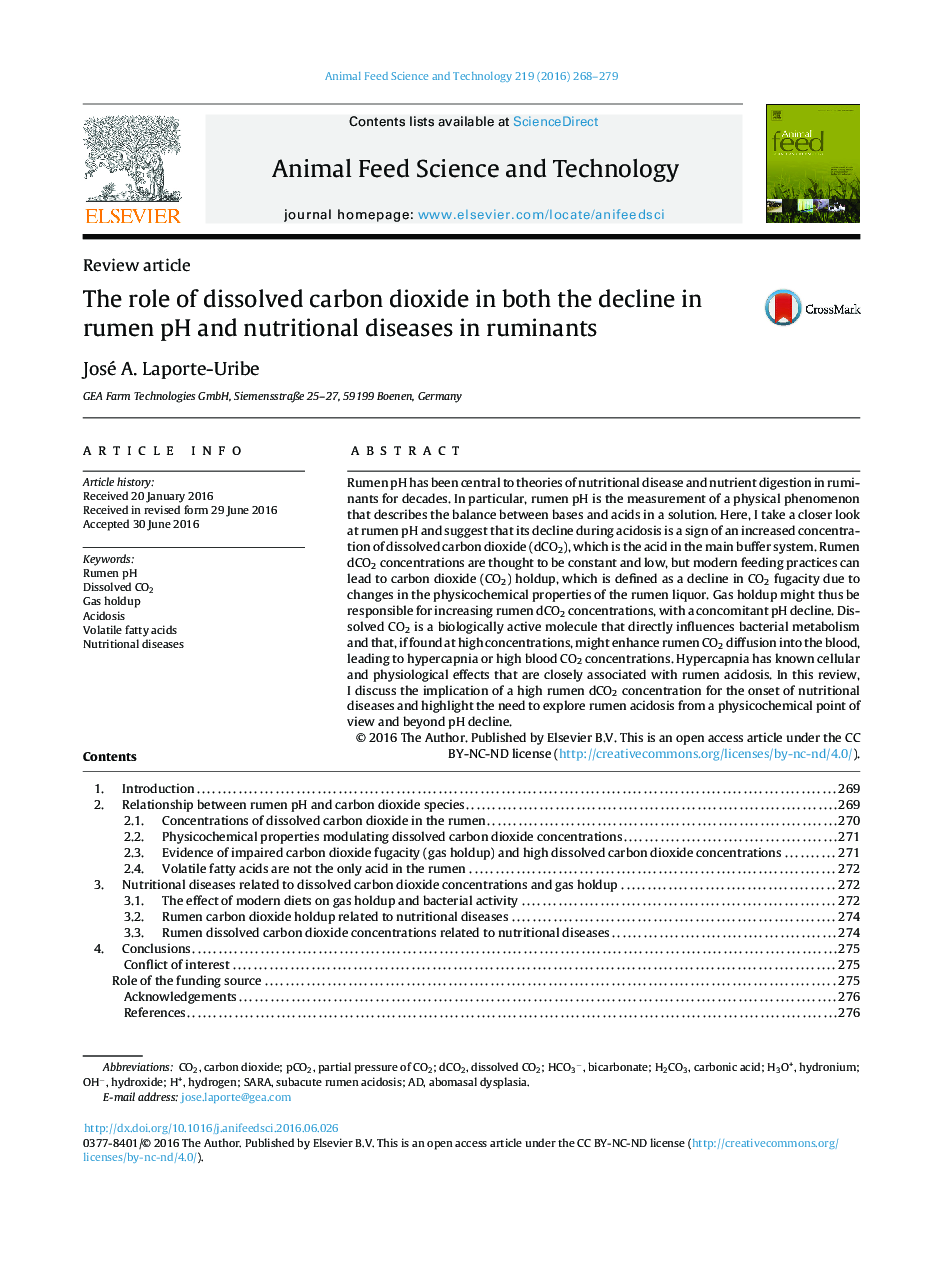| Article ID | Journal | Published Year | Pages | File Type |
|---|---|---|---|---|
| 8491143 | Animal Feed Science and Technology | 2016 | 12 Pages |
Abstract
Rumen pH has been central to theories of nutritional disease and nutrient digestion in ruminants for decades. In particular, rumen pH is the measurement of a physical phenomenon that describes the balance between bases and acids in a solution. Here, I take a closer look at rumen pH and suggest that its decline during acidosis is a sign of an increased concentration of dissolved carbon dioxide (dCO2), which is the acid in the main buffer system. Rumen dCO2 concentrations are thought to be constant and low, but modern feeding practices can lead to carbon dioxide (CO2) holdup, which is defined as a decline in CO2 fugacity due to changes in the physicochemical properties of the rumen liquor. Gas holdup might thus be responsible for increasing rumen dCO2 concentrations, with a concomitant pH decline. Dissolved CO2 is a biologically active molecule that directly influences bacterial metabolism and that, if found at high concentrations, might enhance rumen CO2 diffusion into the blood, leading to hypercapnia or high blood CO2 concentrations. Hypercapnia has known cellular and physiological effects that are closely associated with rumen acidosis. In this review, I discuss the implication of a high rumen dCO2 concentration for the onset of nutritional diseases and highlight the need to explore rumen acidosis from a physicochemical point of view and beyond pH decline.
Keywords
Related Topics
Life Sciences
Agricultural and Biological Sciences
Animal Science and Zoology
Authors
José A. Laporte-Uribe,
